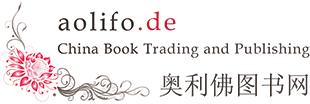Main page » Chinese Art » Chinesische Volkskunst: Chinesische Drachen [German Edition]. ISBN: 9787508515533
![Chinesische Volkskunst: Chinesische Drachen [German Edition]. ISBN: 9787508515533 Chinesische Volkskunst: Chinesische Drachen [German Edition]. ISBN: 9787508515533](images/product_images/popup_images/Chinesische-Volkskunst-Chinesische-Stoffarbeiten-Bildband-China-Deutsche-Ausgabe-ISBN-9787508515564_5124.jpg)
![Chinesische Volkskunst: Chinesische Drachen [German Edition]. ISBN: 9787508515533 Chinesische Volkskunst: Chinesische Drachen [German Edition]. ISBN: 9787508515533](images/product_images/popup_images/Chinesische-Volkskunst-Chinesische-Stoffarbeiten-Bildband-China-Deutsche-Ausgabe-ISBN-9787508515564_5124-1.jpg)
![Preview: Chinesische Volkskunst: Chinesische Drachen [German Edition]. ISBN: 9787508515533 Preview: Chinesische Volkskunst: Chinesische Drachen [German Edition]. ISBN: 9787508515533](images/product_images/gallery_images/Chinesische-Volkskunst-Chinesische-Stoffarbeiten-Bildband-China-Deutsche-Ausgabe-ISBN-9787508515564_5124.jpg)
![Preview: Chinesische Volkskunst: Chinesische Drachen [German Edition]. ISBN: 9787508515533 Preview: Chinesische Volkskunst: Chinesische Drachen [German Edition]. ISBN: 9787508515533](images/product_images/gallery_images/Chinesische-Volkskunst-Chinesische-Stoffarbeiten-Bildband-China-Deutsche-Ausgabe-ISBN-9787508515564_5124-1.jpg)
Chinesische Volkskunst: Chinesische Drachen [German Edition]. ISBN: 9787508515533
German Title: Chinesische Volkskunst: Chinesische Stoffarbeiten
Chinese Title: 中国布艺 (德文版)
ISBN-10: 7-50-851556-0, 7508515560
ISBN-13: 978-7-50-851556-4, 9787508515564
Series: Chinesische Volkskunst - Bildbände China (deutsche Ausgabe)
Binding: softcover
Pages: 102
Shipping Weight: 390g
Size: 190mm x 214mm
Language: German
Publisher: China Intercontinental Press (五洲传播出版社)
German language edition. This illustrated book shows beautifully designed unique pieces of Chinese cloth art from the chapters children's hats, stuffed animals, ear pillows, traditional baby bibs, traditional Hebao bags, pillow embroidery, traditional belly bands, ethnic clothing embroidery, popular cross embroidery. Enriched by German-language texts, about 100 examples of traditional Chinese textile work are presented, which are regaining popularity in our time. Use this illustrated book as a template for your own work or enjoy the elaborate fabric work. The Chinese were the pioneers who raised silkworms and then used the cocoons of the animals to create silk threads, from which they then made silk. From Yuanfei, the concubine of the Yellow Emperor, is told that she herself bred silkworms. When 4000 years ago Chinese began to wear clothes in different colors and designs, the triumph of weaving and embroidery techniques had begun. Needle and thread were enough to make decorative clothing. As a result, people's lives became more colorful and the quality of life increased, and this development accelerated the development of civilization in China.
Chinese Title: 中国布艺 (德文版)
ISBN-10: 7-50-851556-0, 7508515560
ISBN-13: 978-7-50-851556-4, 9787508515564
Series: Chinesische Volkskunst - Bildbände China (deutsche Ausgabe)
Binding: softcover
Pages: 102
Shipping Weight: 390g
Size: 190mm x 214mm
Language: German
Publisher: China Intercontinental Press (五洲传播出版社)
German language edition. This illustrated book shows beautifully designed unique pieces of Chinese cloth art from the chapters children's hats, stuffed animals, ear pillows, traditional baby bibs, traditional Hebao bags, pillow embroidery, traditional belly bands, ethnic clothing embroidery, popular cross embroidery. Enriched by German-language texts, about 100 examples of traditional Chinese textile work are presented, which are regaining popularity in our time. Use this illustrated book as a template for your own work or enjoy the elaborate fabric work. The Chinese were the pioneers who raised silkworms and then used the cocoons of the animals to create silk threads, from which they then made silk. From Yuanfei, the concubine of the Yellow Emperor, is told that she herself bred silkworms. When 4000 years ago Chinese began to wear clothes in different colors and designs, the triumph of weaving and embroidery techniques had begun. Needle and thread were enough to make decorative clothing. As a result, people's lives became more colorful and the quality of life increased, and this development accelerated the development of civilization in China.

![Chinesische Volkskunst: Chinesische Drachen [German Edition]. ISBN: 9787508515533 Chinesische Volkskunst: Chinesische Drachen [German Edition]. ISBN: 9787508515533](images/product_images/info_images/Chinesische-Volkskunst-Chinesische-Stoffarbeiten-Bildband-China-Deutsche-Ausgabe-ISBN-9787508515564_5124.jpg)
![Chinesische Volkskunst: Chinesische Drachen [German Edition]. ISBN: 9787508515533 Chinesische Volkskunst: Chinesische Drachen [German Edition]. ISBN: 9787508515533](images/product_images/info_images/Chinesische-Volkskunst-Chinesische-Stoffarbeiten-Bildband-China-Deutsche-Ausgabe-ISBN-9787508515564_5124-1.jpg)